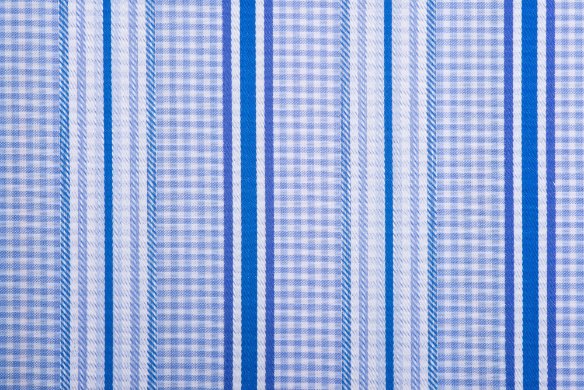Exploring the History, Texture, and Breathable Properties of This Classic Warm-Weather Textile
Seersucker fabric stands out with its unique puckered texture and lightweight feel. This classic cotton fabric creates natural ripples in the weaving process, making it highly breathable and wrinkle-resistant – perfect for warm-weather clothing and home textiles.
The name comes from Persian origins, reflecting its journey from India to modern wardrobes worldwide. Its distinctive striped or checked patterns, combined with the crinkled surface, create a fabric that’s both practical and stylish.
Today, seersucker appears in various colours and patterns, from traditional blue and white stripes to contemporary designs. Its versatility makes it a favourite for summer dresses, suits, and children’s clothing, as well as household items like bedding and curtains.
On This Page
Key Takeaways
- Seersucker’s puckered texture naturally keeps the fabric away from skin, enhancing airflow and comfort
- The fabric requires minimal ironing due to its intentionally wrinkled surface texture
- Modern seersucker comes in both pure cotton and synthetic blends suitable for various uses
History and Origin of Seersucker
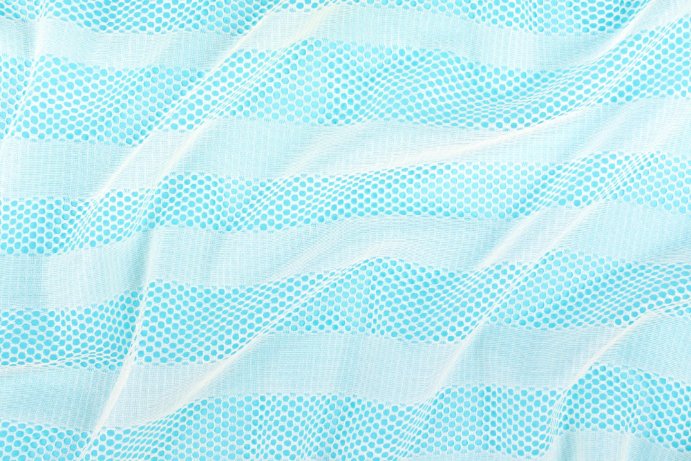
Seersucker fabric originated in India, with its name coming from Persian words ‘shir’ (milk) and ‘shakar’ (sugar). The fabric’s distinctive puckered texture made it a popular choice in hot climates.
Evolution of Seersucker Fabric
The British Empire introduced seersucker to Western fashion during their rule of India in the 18th century. The fabric gained popularity due to its practical benefits – it was easy to wash, durable, and kept people cool.
The unique texture comes from a special weaving process. Cotton threads bunch together to create the signature crinkled pattern, which lifts the fabric away from the skin.
Early seersucker was crafted entirely from cotton. This natural fibre proved ideal for the fabric’s distinctive weave and breathable properties.
Seersucker in Modern Fashion
The fabric evolved into a summer staple, especially for warm-weather attire. Its lightweight nature and distinctive striping patterns have maintained its appeal for generations.
Traditionally, seersucker appears in blue and white stripes. Modern versions come in various colours and patterns, from checks to plaids.
The material remains popular in contemporary fashion, particularly for summer suits and casual wear. Its low-maintenance qualities and natural cooling properties continue to attract fashion-conscious consumers.
Characteristics of Seersucker
Seersucker’s most notable physical features include its distinctive puckered texture and exceptional breathability. These unique traits make it an excellent choice for warm-weather clothing.
Puckered Stripes
The signature look of seersucker comes from its alternating smooth and crinkled sections. These puckers form when some warp threads are pulled tighter than others during weaving.
The raised stripes create a textured surface that stands slightly away from the skin. This unique weaving technique results in stripes or checks that maintain their wrinkled appearance without ironing.
The puckered effect is permanent and doesn’t require special treatment to maintain its shape.
Breathability and Air Circulation
The fabric’s raised texture creates tiny air channels between the material and skin. These channels promote constant airflow, helping to regulate body temperature in warm conditions.
The natural ventilation system makes seersucker particularly suited for summer clothing. Its structure allows heat to escape while drawing fresh air towards the body.
The air pockets also prevent the fabric from clinging to the skin, increasing comfort in humid weather.
Cotton Seersucker Fabric
Pure cotton seersucker offers superior moisture-wicking properties. The natural fibres absorb perspiration and allow it to evaporate quickly.
Cotton seersucker is remarkably easy to maintain. It can be machine washed in cool water and air-dried to preserve its distinctive texture.
The fabric becomes softer with each wash whilst maintaining its structural integrity. Its wrinkled nature means it rarely needs ironing, making it practical for everyday wear.
Manufacturing Process
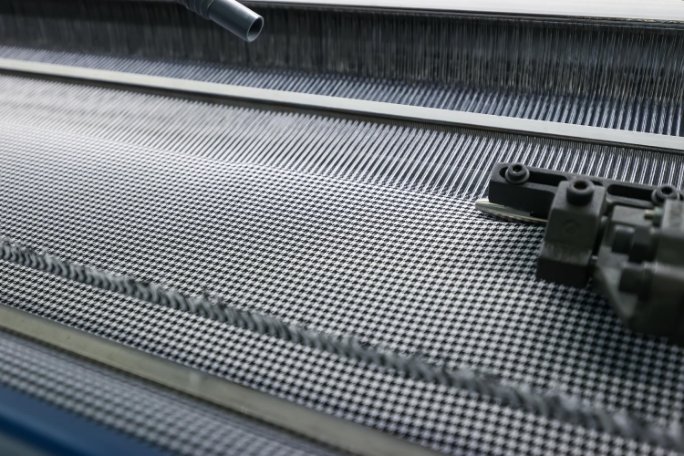
The signature puckered texture of seersucker comes from a specialised weaving technique that alternates between tight and loose threads during production.
Slack-Tension Weaving
Slack-tension weaving creates seersucker’s distinctive crinkled surface. The process involves two sets of warp threads woven at different tensions.
One set of threads remains taut whilst the other remains loose. This tension difference makes some threads bunch together, creating raised puckered stripes.
The puckered effect is permanent and doesn’t require ironing. The texture comes from the weaving itself, not from any chemical treatments or finishing processes.
Types of Seersucker Fabrics
Traditional seersucker uses 100% cotton yarns, though modern versions may include synthetic blends. Pure cotton offers the best breathability and comfort.
Striped patterns are most common, with alternating smooth and puckered stripes running lengthwise. The stripes typically appear in white plus another colour.
Some manufacturers produce checked or plaid seersucker by applying the slack-tension technique in both directions.
Synthetic blends can improve wrinkle resistance and durability, but may reduce the fabric’s natural cooling properties.
Fashion Applications
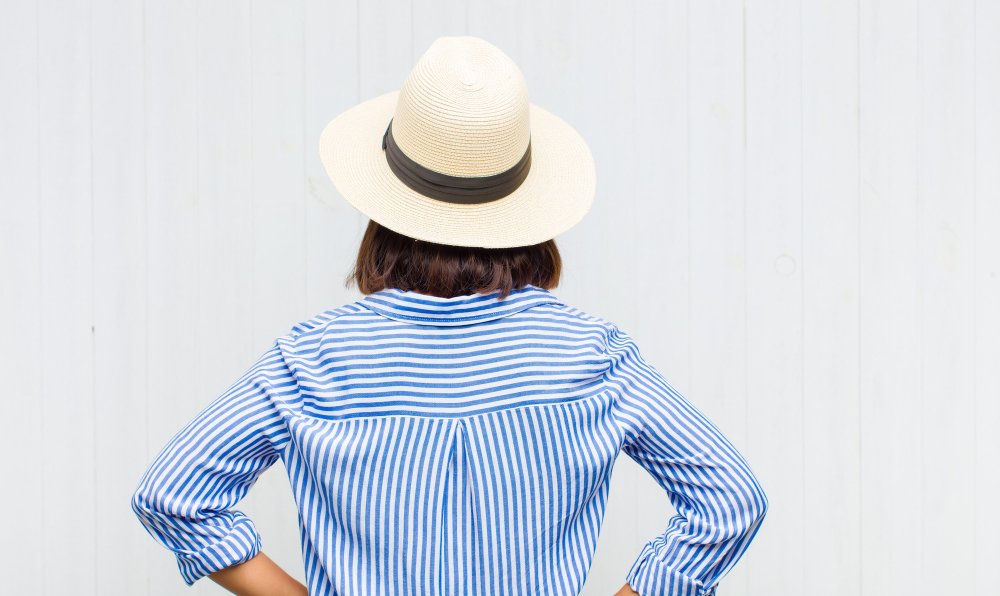
Seersucker fabric stands as a cornerstone in warm-weather fashion, offering a unique blend of style and practicality. Its distinctive puckered texture and breathable nature make it a versatile choice for various clothing items.
Seersucker Suits
Traditional seersucker suits remain a staple in international menswear. The classic blue and white striped pattern dominates the market, though other colours have gained popularity.
These suits excel in warm climates, requiring minimal ironing whilst maintaining a crisp appearance. The natural puckering of the fabric keeps the material away from the skin, creating air pockets for improved ventilation.
Professional tailors often choose cotton seersucker for its durability and shape retention. Some modern versions incorporate polyester blends for added wrinkle resistance.
Casual and Formal Wear
Seersucker dresses and shirts offer excellent options for summer wardrobes. The fabric’s lightweight nature suits casual daywear and smart-casual events alike.
Popular casual items include:
- Button-down shirts
- Summer dresses
- Shorts
- Casual trousers
For formal occasions, seersucker blazers provide a sophisticated alternative to traditional wool jackets. The fabric’s natural texture adds visual interest without sacrificing comfort.
Accessories
Vintage-inspired accessories complement the classic appeal of seersucker clothing. The fabric’s distinctive texture makes it ideal for statement pieces.
Common seersucker accessories include:
- Bow ties
- Pocket squares
- Summer caps
- Beach bags
These items often feature traditional stripe patterns, though modern designers experiment with checks and solid colours. The durability of seersucker makes these accessories particularly practical for regular use.
Textile Care and Maintenance
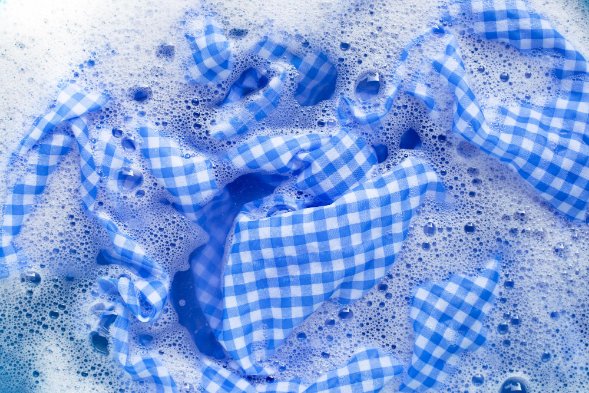
Seersucker fabric needs gentle cleaning and proper maintenance to keep its signature puckered texture and crisp appearance. The right care methods help prevent fading and maintain the fabric’s natural wrinkle resistance.
Washing and Ironing
Machine washing in cold water works well for most seersucker garments. Use mild detergent and avoid harsh chemicals that can damage the fibres.
Turn garments inside out before washing to protect the textured surface. This step helps prevent excessive wear on the puckered areas.
Drying Tips:
- Air dry whenever possible
- Hang on padded hangers
- Keep away from direct sunlight
- Remove promptly from washing machine
Iron only if necessary, using a low to medium heat setting. Press the fabric gently while it’s slightly damp for best results.
Preserving the Puckered Texture
The unique puckered effect of seersucker requires special attention to maintain its distinctive appearance.
Key Preservation Methods:
- Avoid heavy pressing or ironing
- Store on proper hangers
- Keep away from excessive heat
- Don’t overload washing machine
Air drying helps maintain the puffy texture and natural wrinkle resistance of the fabric. This method preserves the dimensional stability of the material.
Protect garments from prolonged sun exposure to prevent colour fading. Store in a cool, dry place when not in use.
Home Décor and Utility Fabric
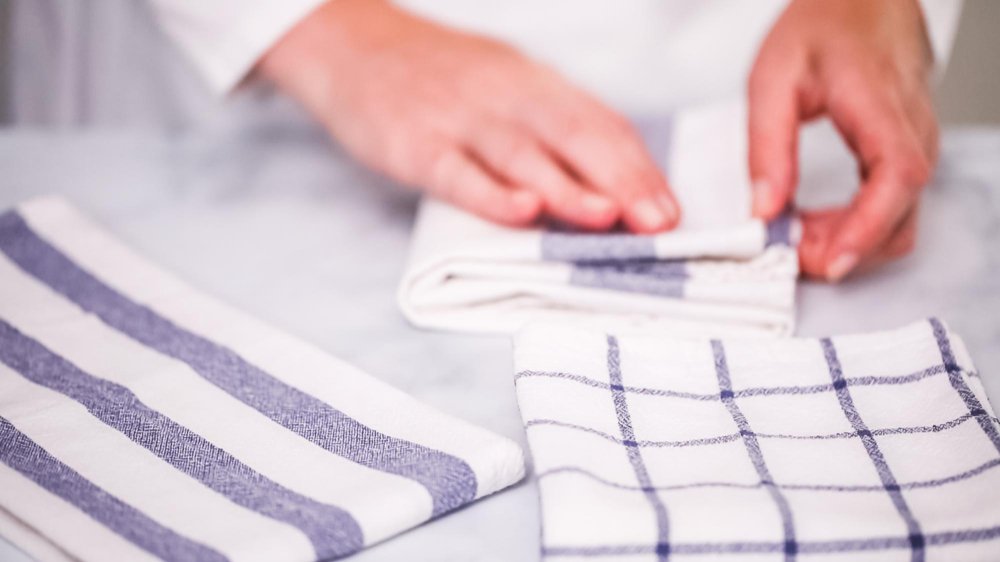
Seersucker fabric adds texture and visual interest to home décor with its distinctive puckered stripes and lightweight cotton construction. The fabric’s natural breathability and low-maintenance properties make it an excellent choice for various household applications.
Bedding and Curtains
Cotton seersucker bedding sets create a casual, lived-in look that’s perfect for both modern and traditional bedrooms. The fabric’s natural crinkle means less ironing and maintains its textured appearance even after multiple washes.
The light, airy quality of seersucker makes it ideal for summer curtains. Its semi-sheer nature filters sunlight while maintaining privacy, and the textured surface adds depth to window treatments.
Popular bedding items include:
- Duvet covers
- Pillowcases
- Bed sheets
- Light quilts
Tablecloths and Upholstery
Traditional seersucker patterns like gingham and stripes work brilliantly for casual dining tablecloths. The fabric’s natural wrinkles hide creases from use, making it practical for everyday table settings.
For upholstery, seersucker works best on accent pieces like:
- Throw pillows
- Dining chair cushions
- Window seat covers
The fabric’s durability and washability make it practical for pieces that see regular use. Its textured surface helps hide wear and tear, whilst the cotton composition ensures comfort against the skin.
Choosing the Right Seersucker
Selecting quality seersucker fabric requires careful attention to weight, texture, and intended use. The fabric’s distinctive puckered surface and breathable properties make it ideal for warm-weather garments.
Comparing Seersucker with Other Fabrics
Seersucker offers unique advantages over common summer fabrics. Unlike linen, which wrinkles easily, seersucker’s natural texture conceals creases and requires minimal maintenance.
Viscose drapes smoothly but lacks the natural cooling properties of seersucker’s raised weave pattern. The air pockets created by seersucker’s texture allow better ventilation than flat-woven alternatives.
Cotton seersucker weighs between 3 to 5 ounces per square yard, making it lighter than most summer-weight fabrics.
Appropriate Usage
Seersucker suits perfectly complement garden parties and summer weddings. Light colours work best for daytime events, whilst darker shades suit evening occasions.
For casual elegance, pair seersucker pieces with solid-coloured items:
- Blazers with cotton trousers
- Shorts with crisp polo shirts
- Dresses for afternoon tea parties
The fabric works best in warm climates and during summer months. Choose looser fits to maximise airflow and the fabric’s natural cooling properties.
Purchasing Tips and Recommendations
Seersucker fabric comes in many styles, with blue and grey stripes being classic choices for traditional wear. Solid colours and modern patterns are also available for contemporary tastes.
When shopping for seersucker, test the puckering quality. The fabric should have distinct raised ridges that feel slightly rough, while the sunken stripes should be smoother. Good quality seersucker maintains these textures even after washing.
Lightweight and versatile seersucker works well for various projects. Look for 100% cotton versions for the best breathability and comfort.
Key factors to check:
- Puckering consistency across the fabric
- Even stripe spacing
- Tight, sturdy weave
- Smooth fabric edges
- Colourfast dyes
Popular colour options:
- Blue and white stripes
- Grey and white stripes
- Pastel shades
- Navy
- Tan
Buyers should examine the fabric in good lighting to spot any weaving flaws or colour inconsistencies. A proper inspection helps ensure the signature crinkle effect is uniform throughout.
Quality seersucker fabric typically costs more than standard cotton, but the durability and unique properties justify the investment.
Conclusion
Seersucker stands as a remarkable textile that has successfully bridged centuries and cultures to remain relevant in today’s fashion and home décor landscapes. From its origins in India to its modern global presence, this distinctive fabric continues to offer practical benefits that modern materials struggle to replicate.
The secret to seersucker’s enduring appeal lies in its perfect balance of form and function. Its characteristic puckered texture creates natural ventilation that keeps wearers cool in warm weather while simultaneously presenting a distinctive, stylish appearance. The fabric’s inherent wrinkle resistance and low-maintenance care requirements make it a practical choice for busy modern lives.
Whether crafted into a classic summer suit, a breezy dress, comfortable bedding, or elegant curtains, seersucker brings a touch of timeless sophistication to any application. Its versatility extends beyond traditional blue and white stripes to embrace contemporary patterns and colours, ensuring its continued relevance in changing fashion landscapes.
As sustainability becomes increasingly important in textile choices, seersucker’s durability, natural fibre composition, and energy-efficient care make it an environmentally responsible option. The fabric’s ability to remain crisp and presentable with minimal ironing reduces its carbon footprint throughout its lifetime.
In a world of synthetic fabrics and fast fashion, seersucker represents a connection to textile traditions while meeting modern needs for comfort, style, and practicality. With proper care, seersucker garments and home textiles can provide years of service while maintaining their distinctive character—a true testament to the enduring quality of this remarkable fabric.
Frequently Asked Questions
Seersucker combines unique weaving techniques with practical benefits to create a puckered cotton fabric that excels in warm weather. Its distinctive texture and versatile nature make it a smart choice for both casual and formal attire.
What distinguishes seersucker fabric from other materials?
Seersucker’s puckered texture creates raised and flat stripes that lift the fabric away from the skin. This unique structure allows air to flow between the cloth and body.
The name comes from the Persian phrase “shir o shakar,” meaning milk and sugar, which refers to the alternating smooth and rough textures.
Can seersucker be utilised for formal attire?
Seersucker suits and blazers remain popular choices for formal summer events. The fabric brings a refined, sophisticated look whilst maintaining comfort in warm weather.
Professional settings embrace seersucker as appropriate business attire, particularly in warmer regions.
How should one care for seersucker garments to maintain their texture?
Wash seersucker in cool water and hang to dry to preserve its natural puckers. Iron on low heat if needed, but avoid excessive pressing that might flatten the signature texture.
Regular gentle washing helps maintain the crisp appearance of the fabric.
What are the environmental benefits of wearing seersucker?
Seersucker requires minimal ironing, which reduces energy consumption. The cotton-based fabric naturally biodegrades at the end of its life cycle.
Its durability means garments last longer, reducing the need for frequent replacements.
How is seersucker typically woven to achieve its characteristic texture?
Manufacturers use two sets of threads at different tensions during weaving. The slack threads create the puckered effect, whilst the tight threads remain flat.
This specialised weaving process happens without chemical treatments or artificial texturing.
In what ways is seersucker an appropriate choice for summer clothing?
The fabric’s lightweight and breathable nature makes it ideal for hot weather. The puckered texture keeps most of the material away from the skin, creating natural ventilation.
The cotton composition wicks moisture effectively, helping to keep the wearer cool and dry.

